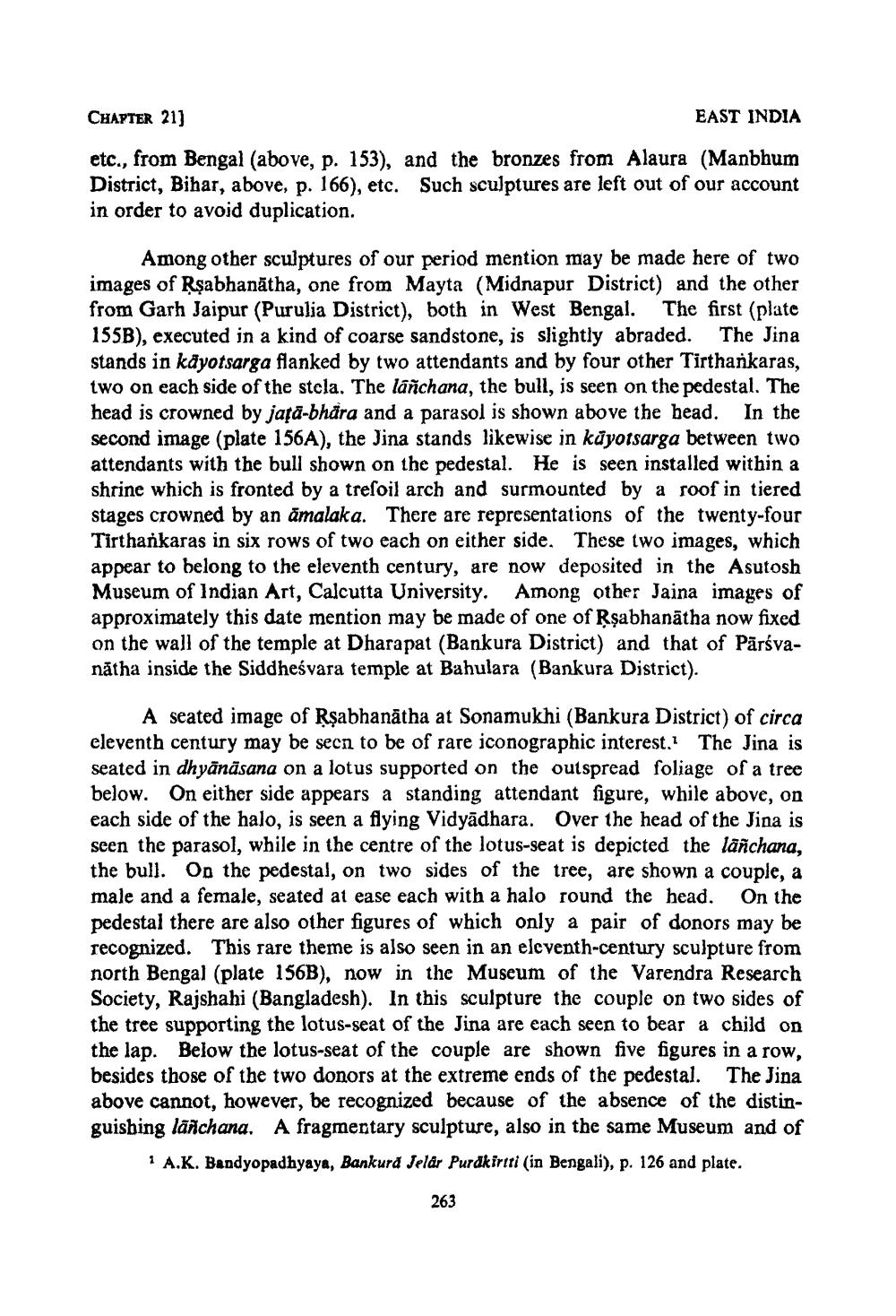________________
CHAPTER 21]
EAST INDIA etc., from Bengal (above, p. 153), and the bronzes from Alaura (Manbhum District, Bihar, above, p. 166), etc. Such sculptures are left out of our account in order to avoid duplication.
Among other sculptures of our period mention may be made here of two images of Rşabhanātha, one from Mayta (Midnapur District) and the other from Garh Jaipur (Purulia District), both in West Bengal. The first (plate 155B), executed in a kind of coarse sandstone, is slightly abraded. stands in käyotsarga flanked by two attendants and by four other Tirtharkaras, two on each side of the stela. The lañchana, the bull, is seen on the pedestal. The head is crowned by jața-bhåra and a parasol is shown above the head. In the second image (plate 156A), the Jina stands likewise in küyotsarga between two attendants with the bull shown on the pedestal. He is seen installed within a shrine which is fronted by a tresoil arch and surmounted by a roof in tiered stages crowned by an amalaka. There are representations of the twenty-four Tirthankaras in six rows of two each on either side. These two images, which appear to belong to the eleventh century, are now deposited in the Asutosh Museum of Indian Art, Calcutta University. Among other Jaina images of approximately this date mention may be made of one of Rşabhanātha now fixed on the wall of the temple at Dharapat (Bankura District) and that of Pārsvanātha inside the Siddheśvara temple at Bahulara (Bankura District).
A seated image of Rşabhanātha at Sonamukhi (Bankura District) of circa eleventh century may be seen to be of rare iconographic interest. The Jina is seated in dhyānāsana on a lotus supported on the outspread foliage of a tree below. On either side appears a standing attendant figure, while above, on each side of the halo, is seen a flying Vidyādhara. Over the head of the Jina is seen the parasol, while in the centre of the lotus-seat is depicted the lanchana, the bull. On the pedestal, on two sides of the tree, are shown a couple, a male and a female, seated at ease each with a halo round the head. On the pedestal there are also other figures of which only a pair of donors may be recognized. This rare theme is also seen in an eleventh-century sculpture from north Bengal (plate 156B), now in the Museum of the Varendra Research Society, Rajshahi (Bangladesh). In this sculpture the couple on two sides of the tree supporting the lotus-seat of the Jina are each seen to bear a child on the lap. Below the lotus-seat of the couple are shown five figures in a row, besides those of the two donors at the extreme ends of the pedestal. The Jina above cannot, however, be recognized because of the absence of the distinguishing lânchana. A fragmentary sculpture, also in the same Museum and of
1 A.K. Bandyopadhyaya, Bankurd Jelar Purdkiriti (in Bengali), p. 126 and plate.
263




